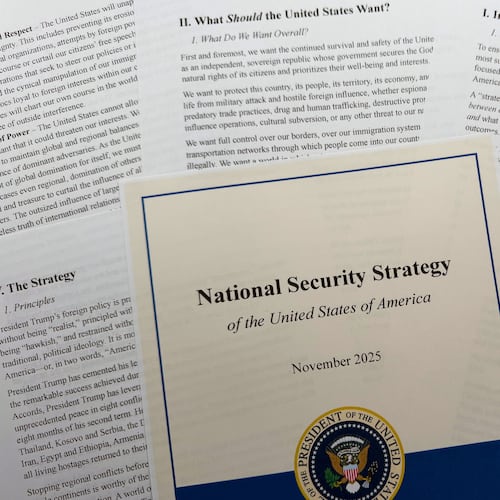What do the HIV drug Emtricitabine, next-generation navigation gyroscopes for autonomous cars and unmanned air vehicles have in common? All three were developed at Georgia’s prestigious research universities — and were created in part using basic scientific research funded by the U.S. government. All three are also examples of technology success stories that could be threatened if the Biden administration’s proposed changes to federal research licensing go into effect.
Last year, the National Institute of Standards and Technology (NIST) published a proposal that, for the first time, would allow the federal government to “march in” and rescind patent protections for commercial products developed with federal dollars when the government deems those products too expensive. The White House touted this framework as a cornerstone of its efforts to “promote competition in health care and support lowering prescription drug costs for American families.”
Credit: Handout
Credit: Handout
The reality is that, aside from some good campaign sound bites, this proposal is unlikely to have any impact on drug pricing. It might, however, affect the pace of innovation across all industries and undermine some of the administration’s accomplishments in the CHIPS Act.
Understanding the significance of this decision requires looking back to the Bayh-Dole Act of 1980. Prior to Bayh-Dole, the United States had established itself as a research powerhouse. But while the U.S. government had accumulated more than 28,000 patents, it had licensed less than 5% of them for commercial development. Bayh-Dole changed that by allowing small businesses and universities to retain patent rights on inventions developed with the help of federal funding. Studies have found that, in the four decades since its inception, Bayh-Dole has generated $1.9 trillion in U.S. economic growth, supported 6.5 million jobs and spawned over 17,000 startup companies — some out of universities right here in Georgia.
Bayh-Dole gives the federal government the ability to “march in” and re-license these patented technologies to third parties under certain conditions. But in more than 40 years since Bayh-Dole’s inception, there has never been a single occurrence of a federal agency exercising march-in rights. It has historically been understood as a form of recourse appropriate only in exceptional circumstances. And the authors of Bayh-Dole explicitly stated that price is not a legitimate basis for march-in.
Furthermore, exercising march-in won’t lower prescription drug prices, because march-in applies only to patents on inventions developed with federal funding — not the final product itself. In other words, unless a drug is covered only by these types of patents, march-in would have no impact on its price. A recent study of 361 therapeutics that received Food and Drug Administration approval between 2010 and 2020 found that only five were susceptible to the exercise of march-in rights because the patents covering them all covered federally backed inventions. This means that, even if government agencies exercise march-in rights under the proposed framework, it would have no impact on the price of 99% of recently approved drugs.
Across all industries, Bayh-Dole has been a huge success because it balances the risks and incentives between public funding of early-stage research and the private sector’s research and development efforts. This has fueled research and development across all industries — and generated billions in private-sector capital investment to support the licensing and commercialization of federally sponsored technologies.
With the proposed framework, the administration risks upsetting that balance.
For most of my career, I have worked in the venture capital community and as an adviser to venture-backed companies, which have mostly sprung out of universities. It can take nearly a decade and tens of millions of dollars in capital investment for many technologies that come out of university labs to achieve commercial success. It’s also a risky proposition for investors, with roughly 90% of startups failing. If, under the proposed framework, companies and investors must contend with federal agencies re-licensing their technologies based solely on price, investors may simply decide that the risks of investing in federally backed research outweigh the rewards — and shift their investments to technologies that are not funded by federal dollars. If that happens, it will take us back to the stagnant, pre-1980s era of commercialization of federally funded research. It would also undermine technologies developed through the CHIPS Act, among many other federal programs.
Earlier this year, a bipartisan group of 28 lawmakers sent a letter to President Joe Biden to express concerns with the proposal. We can only hope the White House listens.
John S. Sears is an IAM 300 top global intellectual property strategist recognized for his work with early-stage companies and technologies. He is a senior partner at the law firm Johnson, Marcou, Isaacs, & Nix and a principal at venture capital firm Anzu Partners. He holds a doctorate in chemistry from Georgia Tech and a law degree from Wake Forest University School of Law.
About the Author
Keep Reading
The Latest
Featured


